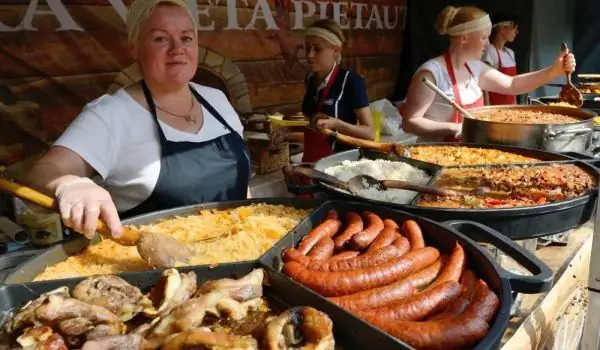2025 Author: Jasmine Walkman | [email protected]. Last modified: 2025-01-23 10:18
There is an unprecedented phenomenon in Peru today. Food, which is commonplace in many countries, is tantamount to religion.
Over the years, it has become a driving force that creates producers, chefs, entrepreneurs, restaurateurs and consumers. Today, more than 80,000 young Peruvians have chosen to study gastronomy instead of playing football.
Peruvian cuisine was born from a fusion of ancient culinary traditions from the pre-Columbian era with the rich cuisine of the Spaniards, enriched by delicious and aromatic Arabic influences, to which was later added the heritage of slaves from Africa. All this is ideally complemented by the skills of French chefs.
The whole cultural diversity creates a colorful mix, or so-called mistura, in which tastes and techniques from four continents are intertwined to create the astonishing richness of Peruvian cuisine. The fusion style in Peruvian cuisine has existed for five centuries.
Peruvians themselves claim that there is no more diverse cuisine than theirs - the number of traditional dishes is known - they are 491. In this respect, only France, China and India can compete with Peru. Suffice it to say that along the 2250 km long Peruvian coast there are over 2500 different types of soups and more than 250 traditional desserts.

Classic Peruvian cuisine is attractive because of the unusually bright and colorful colors and because of the spicy notes due to the hot peppers, which have hundreds of varieties and which are the main ingredient. It also attracts with its bold and harmonious aroma and taste combinations.
The greatest charm of this tradition undoubtedly comes from the ingredients - these are products with inspiring names and unique taste such as maca - extremely useful and tasty root, kamu kamu - the rounded fruits of the Amazon bush, which are considered a superfood, yakon - continue crispy and a slightly sweet root from the Andes, cherimoya - a juicy and tasty Andean fruit, rocco - a kind of peppers, similar to kambi, kamote - a sweet potato, ahi - various kinds of hot peppers or lukuma - a fruit from the high coastal valleys.
In some very high parts, llama, alpaca and wildlife meat are still eaten today. Common to all Andean areas of Peru is the use of guinea pig or kui meat, an animal that has been part of the local culture for thousands of years and whose meat is low in fat and high in protein.
See appetizing recipes for Trout in Peruvian, Anticuchos, Soup a la Cryola, Ceviche.
Recommended:
Culinary Traditions In Lithuania

Lithuania is the southernmost and largest of the three Baltic States. It is located on the southeast coast of the Baltic Sea. The country borders Latvia to the north, Belarus to the southeast, and Poland and Russia to the southwest. Lithuanian belongs to the group of Indo-European languages and is spoken by about 4,000 people in Lithuania.
Culinary Traditions In Denmark

The Danish culinary tradition is determined by the geographical location of the country. Main products are potatoes, barley, rye, beets, turnips, mushrooms. Both fish and seafood are widespread. Breakfast usually consists of coffee or tea and rye or white bread with cheese or jam.
Turkish Culinary Traditions - Interesting Facts

To be able to look a little deeper into the culinary traditions of Turkey , we will have to introduce you to at least a few sentences and its story with the promise not to bore you. Like many other peoples, the Turks were once nomads. They traveled from one place to another and did not stay anywhere for too long.
Culinary Traditions In Australia

Seen from Eastern Europe, Australia looks distant and exotic. The same can be said for her cuisine, rich in meat, seafood and unfamiliar fish. Today, the continent of Australia is inhabited by immigrants from around the world, each group preserving its culinary traditions and customs.
The Magic Of Spanish Culinary Traditions

Spain attracts millions of tourists with its historical monuments, rich nature, amazing climate and of course - its cuisine. The cuisine of modern Spain not much different from the old, original, simple and delicious in a rustic Spanish cuisine.

